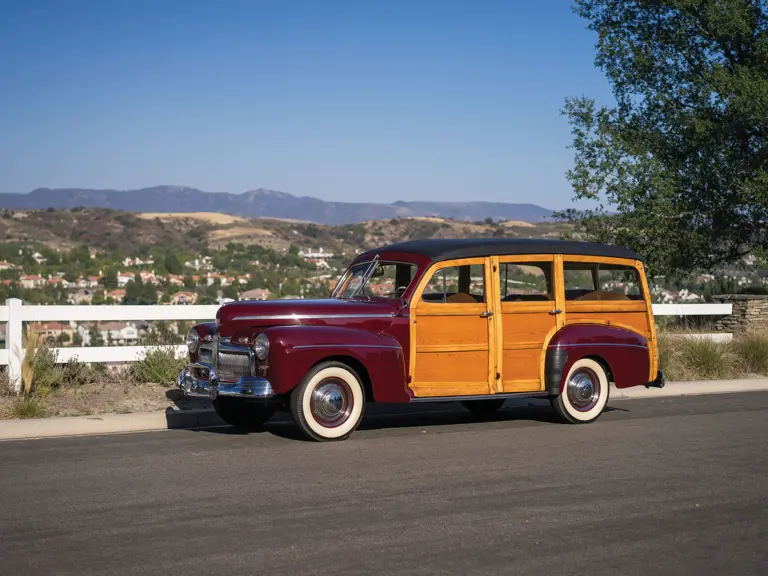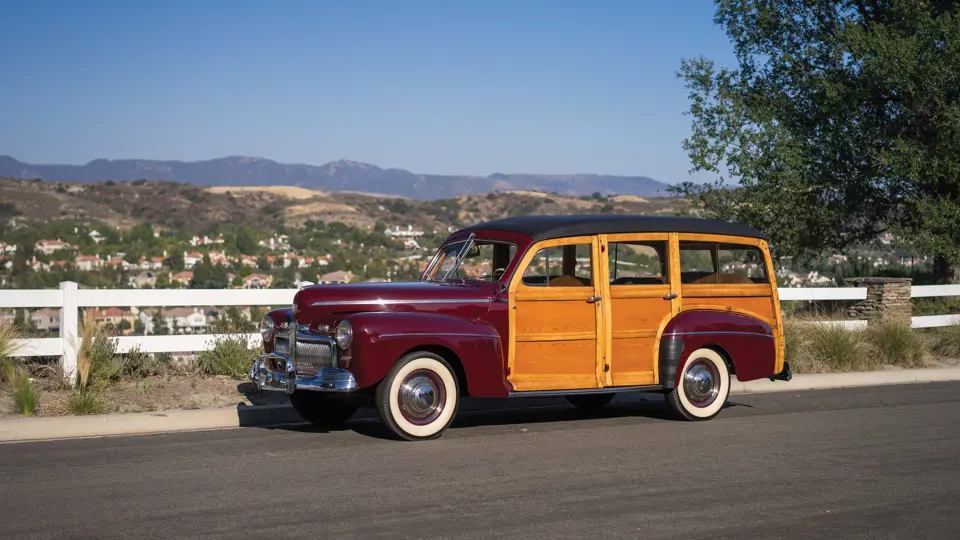 | Santa Monica, California
| Santa Monica, California
The station wagon had long been an important part of Ford’s model lineup, tracing its beginnings to the earliest utilitarian delivery cars and depot hacks built on the Model T chassis. In its earliest appearance, the station wagon was, as its name suggested, a multi-seat transporter/carrier with room for luggage and passengers to be carried to and from train stations. In comparison to other manufacturers, however, Ford built its station wagons in-house. While other firms subcontracted “woodies” to independent companies, Ford observed its founder’s principles by controlling the entire supply chain. The maple, ash, and basswood lumber was grown and milled in Ford’s own northern Michigan forests and mills to be utilized on the now-iconic wooden-bodied cars.
By the 1930s, as wooden construction costs had surpassed those of metal. This resulted in the “woodie” becoming a status symbol in its own right. Accordingly, the Super DeLuxe Station Wagon for 1942 was the priciest Ford offering at $1,100. Along with other Ford models, the Super DeLuxe was redesigned with concealed running boards, new front fenders, and a redesigned grille. Minor styling additions to the Super DeLuxe models included blue painted grooves in the grille, ridges along the upper surface of the bumpers, and additional brightwork surrounding the windshield, rear window, and side windows.
The Ford Station Wagon would hold a special place of its own in the ever-evolving American motoring scene. Including the driver, the wide seats would accommodate up to eight passengers. The easy and quick removal of the rear and center placed seats provided a great deal of area for light utility hauling capacity. The tailgate, in the lowered position, provided a sturdy luggage platform or a place to sit and enjoy light-hearted conversation when parked at a common destination of adventure.
This particular three-seat Ford Super Deluxe Station Wagon is finished in maroon with brown leather upholstery and has been sympathetically restored to a very high standard, with exacting attention paid to originality. Cosmetically, the exterior and interior are both very presentable as are the engine compartment and the extensive exterior woodwork. The vehicle is powered by a 221-cid, 96-hp V-8 engine that is paired to a three-speed manual transmission. The stylish and popular platform is built on a 114-inch wheelbase chassis. No major flaws or imperfections are readily apparent, either cosmetically or mechanically. Well-equipped, this particular Station Wagon also features an enclosed rear spare tire, grille guard, radio, clock, wheel trim moldings, tools and wide whitewall tires.
Of the over 160,000 cars produced by Ford for the 1942 model year, a mere 5,483 examples were Super DeLuxe Station Wagons. In fact, production lasted only four months that year as Ford, along with most other auto manufactures, redirected its operations to assist with the war effort. As a result, 1942 Station Wagons have become particularly desirable collector cars and, thanks in part to their timeless “woodie” design, will continue to be remain sought-after examples of pre-1950s Americana.





